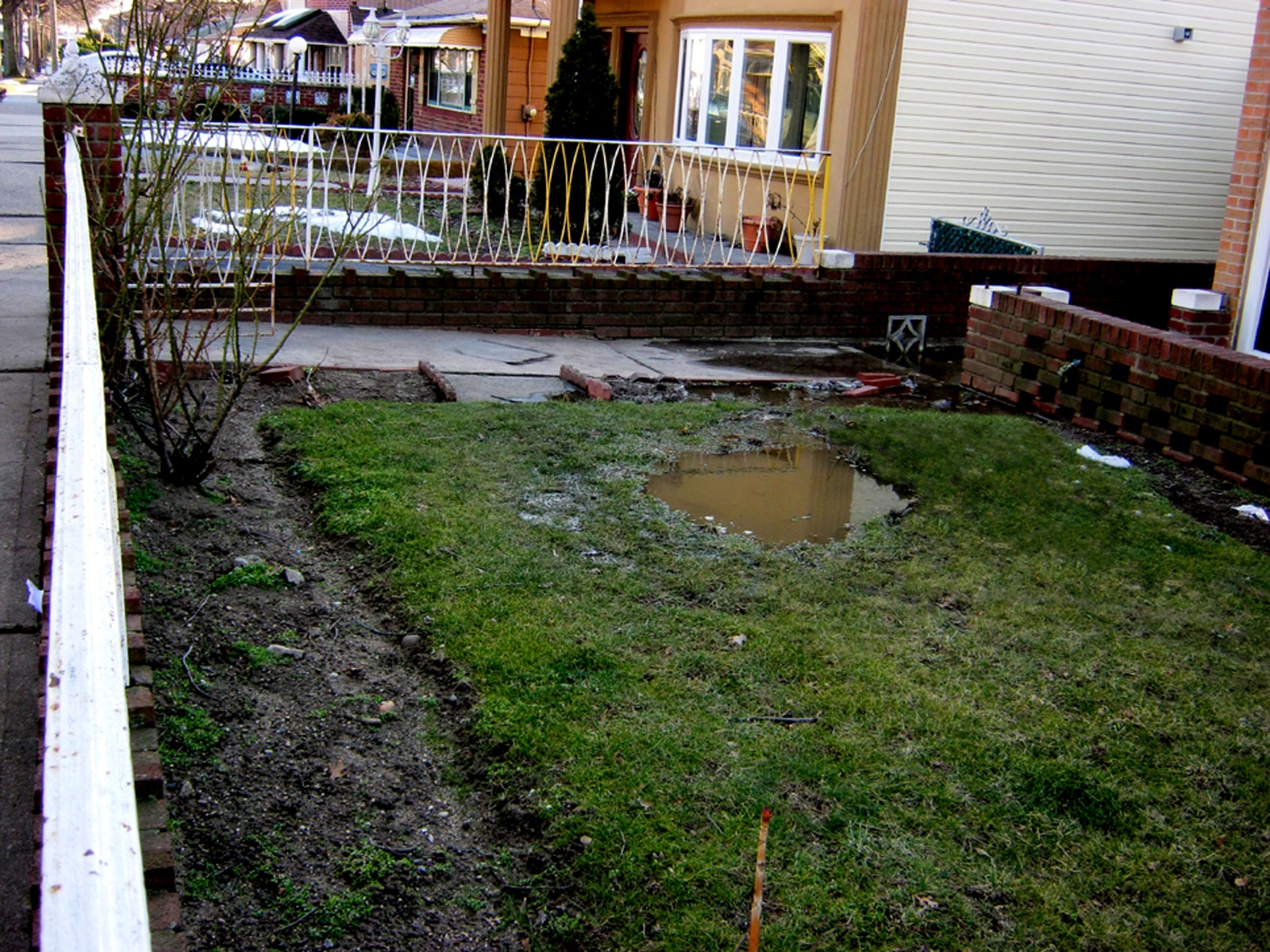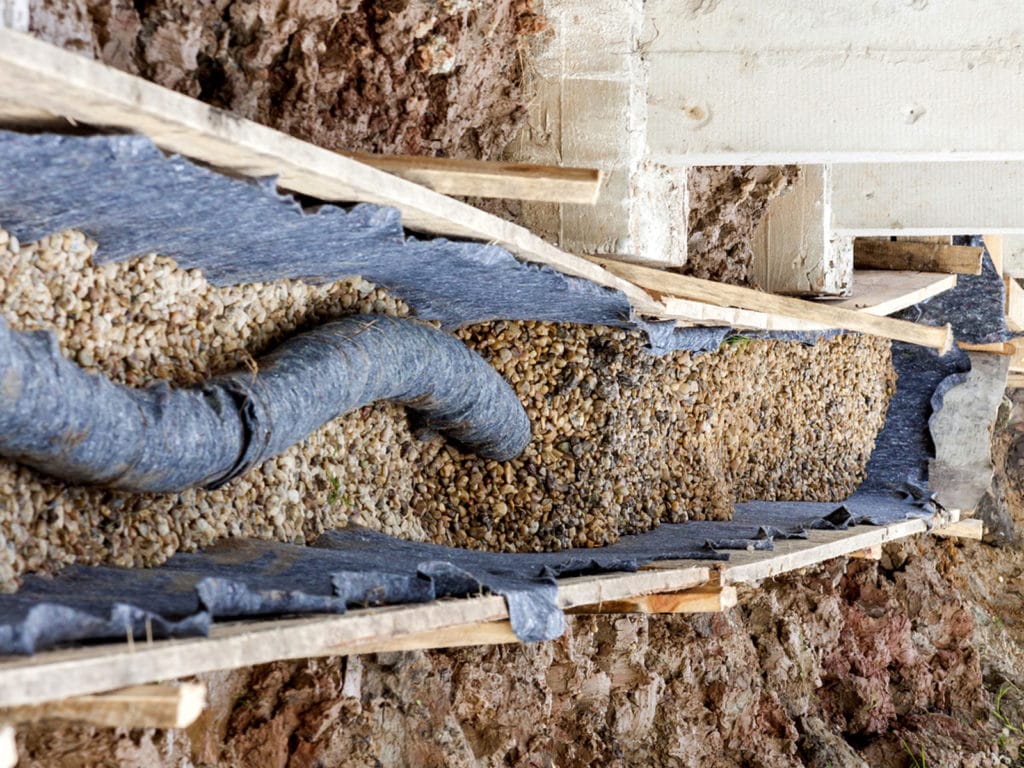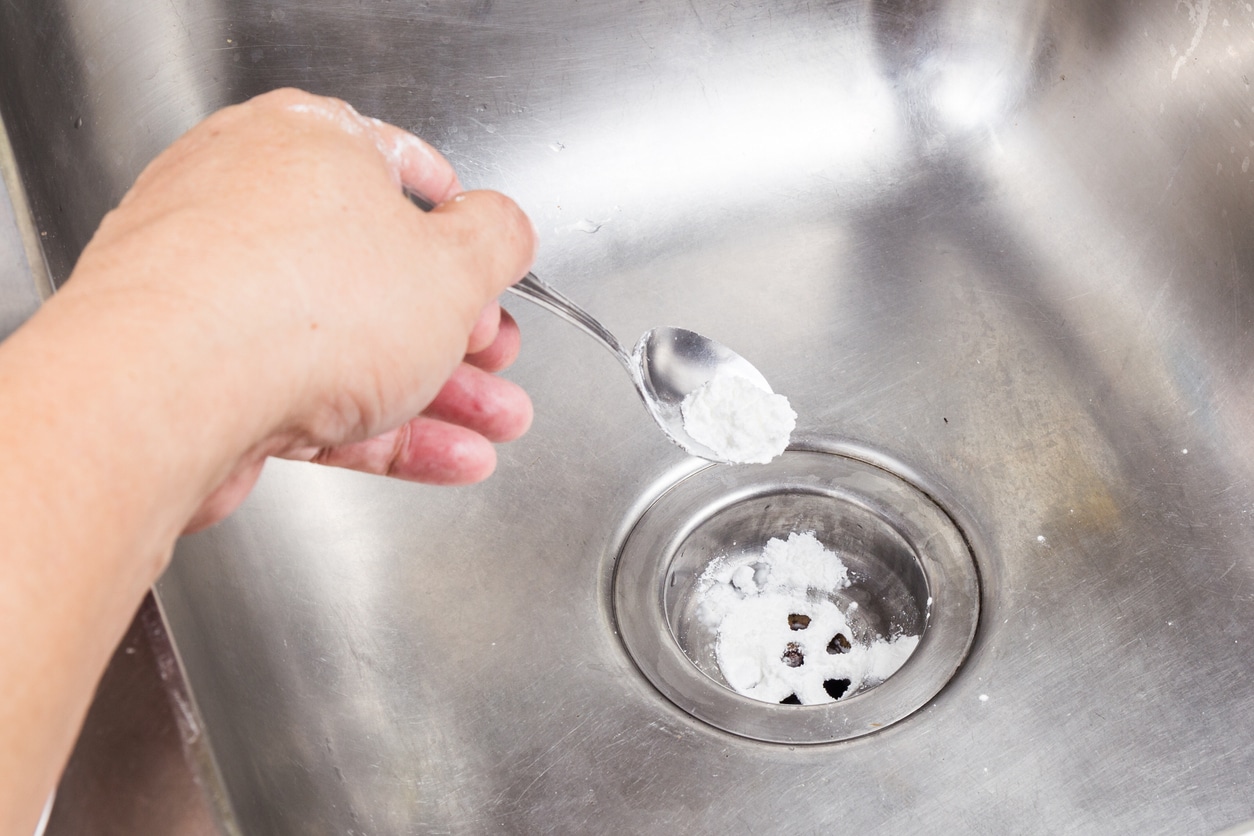Yard drainage is probably the most overlooked component of your home’s plumbing system. If you have a landscaped yard, paved area, or swimming pool area, yard drainage problems can present a whole range of issues for you as a property owner. In some cases, outside drain issues can lead to basement flooding.
Poor yard drainage makes for the risk of creating a breeding ground for insects, and foul stagnant water. Both of these present health issues for you and your family. Additional points of concern include ruined plants, shrubbery, and potential trips and falls.
In many instances, homeowners, such as yourself, tend to ignore such conditions until water drainage problems have become severe. Severe drainage issues can result in you and your family slogging around in bacteria and insect-infested tainted water. Your front and back yards should not become similar to a jungle habitat.
The 4 most common yard drainage problems
When you think of drainage problems, most homeowners immediately think of drains inside the house. However, just like inside drains, outside yard drainage problems can affect your quality of life just as well. Many of these issues are easily avoidable just by doing a routine visual inspection, or periodic maintenance.
1. Clogged Yard Drains and Area Drains
Many things can clog yard drains. Because many yard drains are located near a grass area, the usual suspects are leaves, twigs, grass cuttings, and trash. It’s always a good idea to periodically check your yard and area drains. You can see a small portion of the yard drain from above the grating.
It should be easy to see if an accumulation of debris or sediment is obstructing the water flow. This cure can be as simple as opening the grate when necessary and removing these items lying in the base of the drain. This is an easy fix; you can use a garden scoop, or simply put on a rubber glove and use your hand.
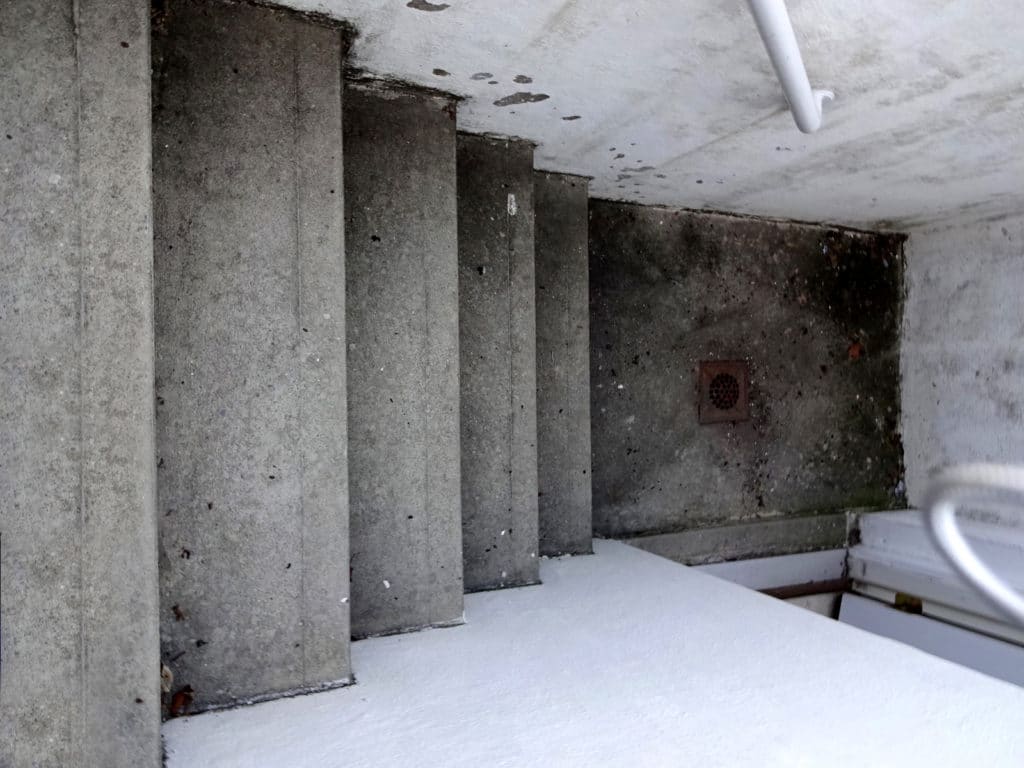
It is not advisable to flush them with a garden hose, as these items then tend to clog the pipe itself. If there is a long-standing problem that has made its way into the pipe, a sewer cleaning or water jet may be needed. In some cases pushing a pressurized garden hose in and out of the pipe can flush out the debris.
2. Dirt and Debris in Yard Drain cause Yard Drainage Problems
During the Fall season, a heavy load of dirt and debris can easily enter the yard drain, and this is one of the most common causes of yard drainage problems. As the leaves begin to dry and fall from the trees, many of them get stuck under the grate. Carrying out yard maintenance and regular cleaning or mowing can help prevent clogging.
Before heavy Spring rains occur, always make sure your yard drain gratings are cleaned of any sediment or leaves. This simple step can save you from a flooded area, or property damage. This is particularly true of area drains that are located just outside of an entry door.
While leaves are common culprits, tree roots present the more serious threat. Tree roots often look for the nearest source of water. Since area and yard drain lines are shallow, it is not unusual for roots to penetrate yard drainage lines. Yard drains provide the moisture that the roots need, and roots are strong enough to penetrate through old pipes, causing breaks and blockages.
3. Low Lying Areas with Poor Drainage
Sloping is another factor and on the list of yard drainage problems and landscape drainage problems. The flooded areas in your lawn, or finished areas, are possibly caused by improper sloping or grading of your yard itself. If this is the case, check how the grading is structured in your property. This can be done using a line level, which is simply a line of rope with a level hanging off of it. A more sophisticated device is a lazer level.
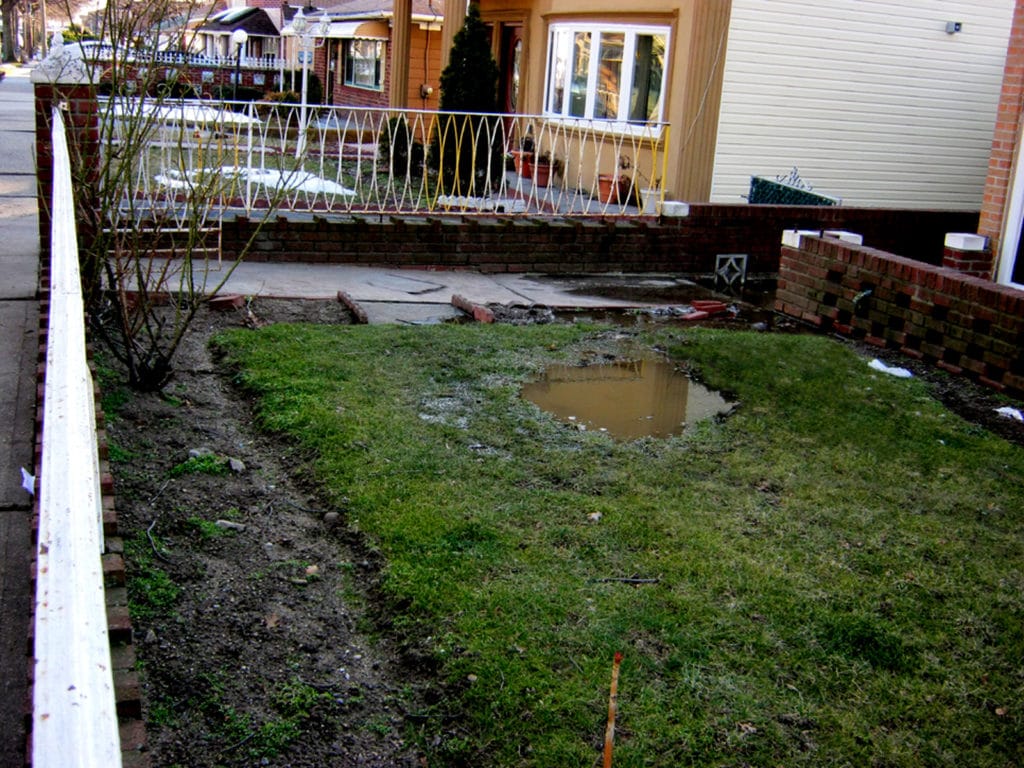
Affected areas usually have a poor drainage design, or no drainage system at all. Even when your own yard water usage does not cause the flood, your neighbor’s sprinkler systems can be the problem due to grading issues. But most frequently yard drainage problems like this are due to rainwater.
In some rare cases dislodged sanitary home drain lines can seep wastewater to outside the house itself. Needless to say, this poses the most severe health danger. Dislodged or disconnected pipes are among a list of common home sewer line problems.
4. Stagnant Water
Pools of standing water in your yard are a clear sign of yard drainage problems. If this is the case, there can be multiple underlying issues. As an example, existing hardpan (soil with a high clay content has very poor drainage qualities) in your property and poor grading. A hardpan calls for site-wide inspection and possibly a new drainage plan.
The solution may involve excavation in wide areas of the lawn. In areas with high rainfall, pools of standing water make your yard aesthetically unpleasing. However perhaps more importantly, this condition makes your yard a breeding ground for insects, hence health problems.
Stagnant water creates the perfect environment for the following insects to breed and thrive: Mosquito, Fly maggots, Dragonfly nymphs, and Water scorpions. Some insects are more than just nuisance. They are known to be carriers of dangerous diseases. Needless to say, this does not paint a pretty picture, and exemplifies why yard drainage problems should be taken seriously.
Your 4 Primary Solutions for Yard Drainage Problems
To prevent all those issues, the obvious solution is to install proper yard drainage, have it regularly checked for issues, or install a water receptacle such as a drywell. Maintenance is the easiest part; installing a drain, drywell, or deciding to install a french drain, are jobs best left to professionals.
In some cases, a simple fix can be to extend the roof gutter downspout further away from the affected area. Creating a creek bed can be a good idea, but this can involve a lot of work and know-how.
For a more permanent solution, you need to call a professional plumber or architect to determine the real problem. Trust a professional to then recommend the most viable approach to solve it. Building a new drainage system or unclogging severely damaged yard drainage pipes can be quite expensive. But relieving yourself of a potential health issue, or potential liability, and raising your quality of life, should make it well worth it.
1. Installing a Yard Drain can solve yard drainage problems
Before the actual installation begins, a professional needs to understand the layout of your property. Local plumbing code can also be a factor. Important to note is that not all public or home sewers are allowed to accept rainwater. This will include driveway, patios, landscaping, garage roof runoff, distance to the street, etc. A plumber can determine low-lying spots in the yard using a leveling method.
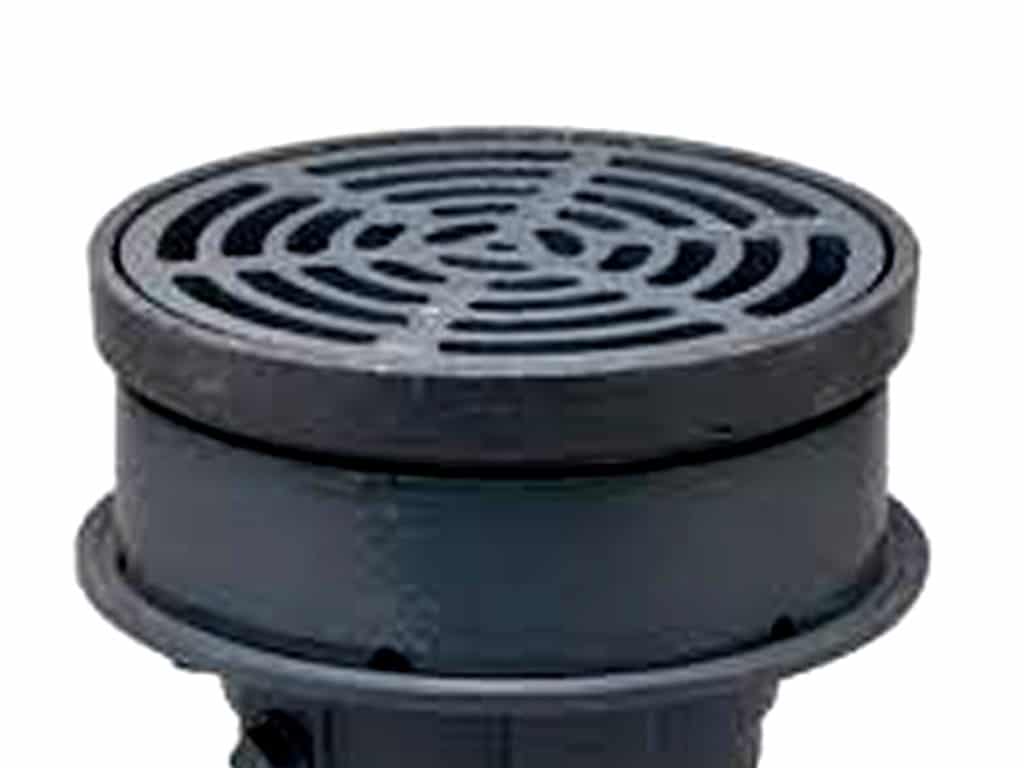
Yard drains are intended to direct water to a municipal storm or combined sewer, drywell, or detention tank; but not to your neighbor’s property. For large scale plumbing modification, chances are you need permit and approved plans. Professional plumbers understand the local code and regulations. And a licensed plumber is capable of securing the proper permits on your behalf.
2. Installing a Drywell
Drywells are an environmentally friendly solution or addition to an existing yard drainage system. Instead of allowing water to flow to a municipal sewer system or be absorbed by soil, a dry well discharges excess water into the soil surrounding the dry well itself.
With the help of downspouts and drains, water is directed to the dry well. Drywells allow for drainage in which a natural filtering process happens. Water will eventually end up as local groundwater and alleviate or prevent yard drainage problems in the first place.
A dry well is effective when you have layer of hardpan in the yard. Digging through the hardpan will allow water to enter more porous soil at a deeper location. Like any plumbing installation, it has to be carefully designed and sized out. It also involves testing the surrounding soil for its absorption rate (also called soil percolation). A poorly designed dry well will serve little purpose, and be a needless and costly addition.
3. Yard Drain Maintenance
Yard drainage is not something that maintains itself without any maintenance. Yard drains require regular maintenance or cleaning to make sure everything works as intended. Simple cleaning near the grate area, and occasional flushing with a garden hose, should be enough to keep the pipes free from dirt and debris accumulation. Hydro Jet cleaning is also a good idea, and it is safer to call a plumber to do it for you.
In some cases, the wall of an area drain will become porous or disintegrate. They can usually be easily repaired and made water tight. A great and not-too costly option is purchasing and installing a pre-cast iron or composite area drain sump pit. They are typically nicely designed, inexpensive, extremely long-lasting, water-tight, and trouble free.
4. French Drains
One of the oldest and most widely used yard drainage systems is a French drain. Basic construction is comprised of perforated pipes, wrapped in filter fabric and crushed stone, to keep debris out. The pipes are buried under gravel and other material through which water can easily penetrate and enter the pipe.
This system is effective in dispersing water through the landscape or directing it to drainage. A French drain is ideal for when water accumulates at a high point in the yard, such as in front of a retaining wall. The French drain then directs the water to a lower point using gravity.
Yard Drainage Professionals
No matter what your yard drainage issues may be, they are most often best left to a professional. Issues such as soil conditions, slope of the ground, calculating volume of water, and plumbing design, are just some of the issues involved in devising a resolution to a drain problem.
Needless to say, these are not considerations easily tackled by a homeowner. Before you spend time and money needlessly, it is suggested you contact your local licensed plumbing and drain professional. If you reside in the NYC area, contact the drain experts at the Balkan Team.

